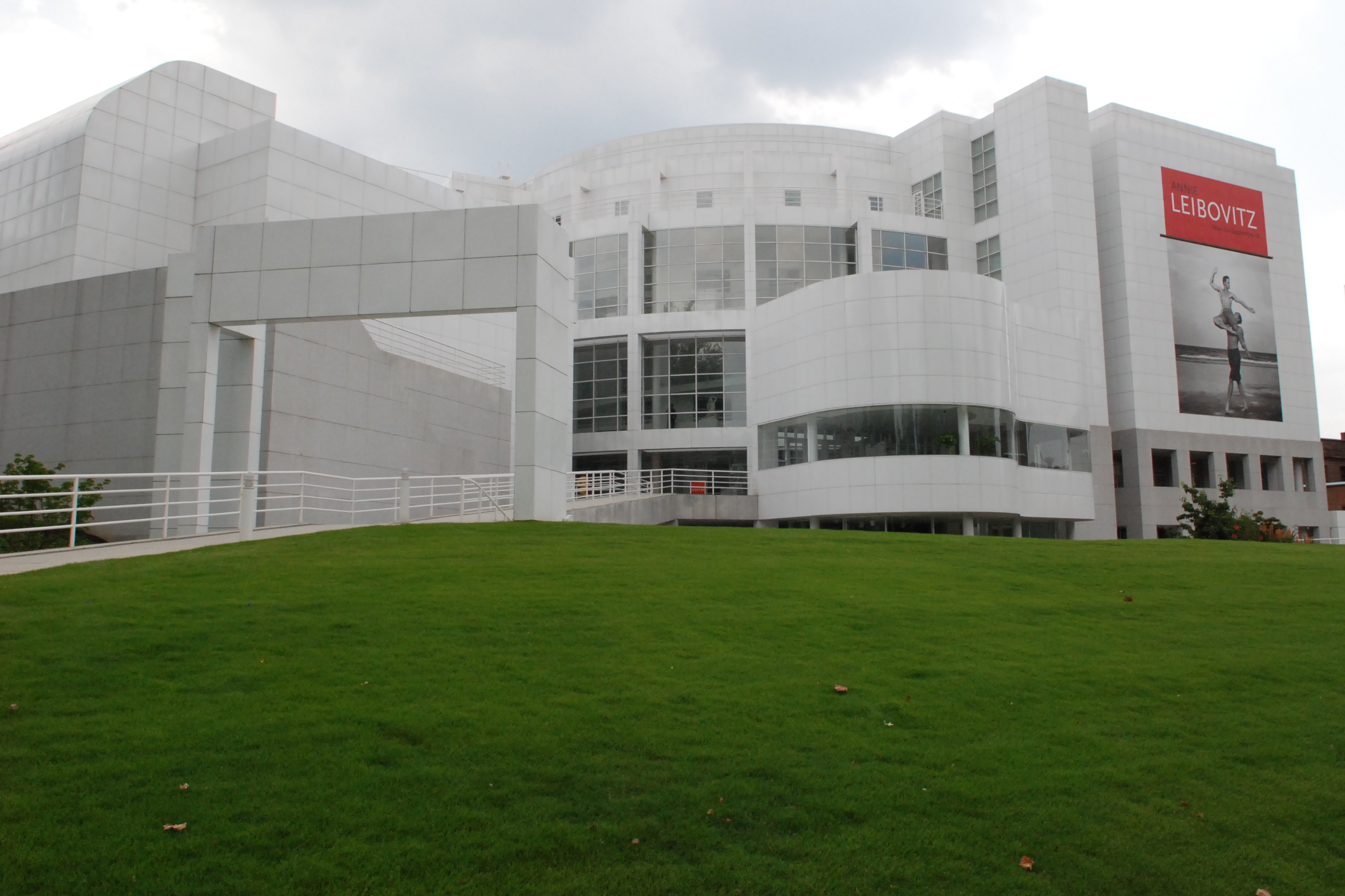High Museum of Art

High Museum of Art by Josh Hallet from WikiCommons, under CC BY-SA 2.0
The High Museum of Art is the most distinguished art museum in Atlanta. Opened in 1905 as the Art Association of Atlanta, the High Museum was originally a house donated to the Association by the wealthy High family. As the High Museum notes on their website, “in 1926, … Mrs. Joseph M. High donated her family’s residence on Peachtree Street,” but “In 1955, the Museum moved to a new brick structure adjacent to the original High house.” The High Museum would continue to be supported by wealthy donors afterwards, most importantly by J.J. Haverty, who founded the popular furniture brand Havertys in 1885 and “bequeathed a group of significant late nineteenth- and early twentieth-century American paintings” that would create “strong base for subsequent additions of American Art to the Museum’s collection,” according to the High Museum.
However, in 1962, there was a tragic event that has since been referred to as the Orly Plane Crash. According to the Donal Rooney, “many of Atlanta’s civic and cultural leaders were returning from a museum tour of Europe sponsored by the Atlanta Art Association when their chartered Boeing 707 crashed upon takeoff at Orly Field near Paris, France.” Most passengers were artists, art collectors, and donors of the Atlanta Art Association, including its president Del Paige. This was not only a huge blow to Atlantan culture but also to the High Museum, as the loss of almost all of its members created a great halt in the museum’s ability to add to its collection. This harsh period on the High Museum did not last long though, as Museum’s website explains that in 1979 Coca-Cola gave a $7.5 million donation to build the new facility that exists today.
The High Museum now stands in Midtown, Atlanta. It neighbors the headquarters of many large corporations like LogistiCare, AMB Business Solutions, and Norfolk Southern Corporation. Additionally, the High Museum neighbors the First Presbyterian Church, a cultural landmark of Atlanta in its own right with it being the first Presbyterian house of worship in the city.
For me, the High Museum serves as a great comparison to the Dedlock’s manor Chesney Wold in Bleak House. The High Museum has a long history of being supported by families of wealth like the Highs and Havertys. Even in their lowest point, when the Museum’s donors perished in a plane crash, the High Museum received a huge donation from the Coca-Cola that not only got them out of a rut but also afforded them a luxurious new building in Midtown. The Dedlocks of Chesney Wold are similar in this way. For instance, though Sir Leicester loses his election and his wife by the end of Bleak House, he still gets experience the privilege of living in the luxury of Chesney Wold that was afforded to him by his wealthy, aristocratic lineage.
Additionally, both the High Museum and Chesney Wold appear purposely unaffected by the worlds around them. Dickens describes Chesney Wold and the world of fashion it embodies as “a very little speck” that “cannot hear the rushing of the larger worlds, and cannot see them as they circle round the sun. It is a deadened world, and its growth is sometimes unhealthy for want of air” (67). Dickens shows that the small world of high fashion maintains itself by ignoring what goes on outside of it. The High Museum functions in this way, too. It holds the dignity of high art by remaining ignorant of the major corporations and the religious buildings that surround it, just as Chesney Wold holds onto dignity of fashion and aristocracy by remaining ignorant of London.
By comparing Chesney Wold and the High Museum, an important lesson can be learned, especially for those in the humanities. High art and culture—while something to be admired—are privileges that sustain classist notions. Without wealth, the art of the High Museum would not have been collected just as the fashion world of Chesney Wold would not have been productive without the estate’s aristocratic wealth. Whether this is a good or bad thing is up to one to decide, but it is ultimately something that should be recognized.
Works Cited
Dickens, Charles. Bleak House, edited by Patricia Ingham, Broadview Press, 2011.
“History of the High.” High, https://high.org/stories/history-of-the-high/.
Rooney, Donald R. "Orly Air Crash of 1962." New Georgia Encyclopedia. 01 August 2017, https://www.georgiaencyclopedia.org/articles/history-archaeology/orly-ai....
Parent Map
Coordinates
Longitude: -84.385552000000
